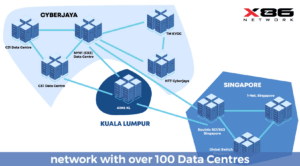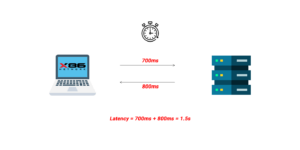Packet loss means when connecting the internet or networks units of data called packets begin to be sent out and received between an origin router and to destination device. Network packets hold small amounts of data that typically include information such as the source and destination address, protocols, or identification numbers. From sending emails to downloading videos, every internet activity requires the transfer of packets. Packet loss occurs when one or more transmitted data packets fail to arrive at their destination, resulting in information loss. The farther the packets have to travel, the higher the chances of loss.
Packet loss can occur due to various reasons
Network CongestionWhen there’s too much traffic on a network, routers, and switches may drop packets to prioritize more important data or to prevent overload. When network traffic reaches maximum capacity, some packets will invariably need to wait. Unfortunately, a connection can only handle so much, and packets are the first things to get abandoned when a network plays catch-up. Fortunately, software today is programmed in such a way that it tries to go back for “lost” packets by resending the data or reducing transfer speeds in order to give each packet an opportunity to travel through the network.
Software BugMultifunctioning software could introduce bugs into a network, and it might cause packet loss. They usually appear in older versions of software and can cause issues with file transmission.
Example: the size of a Word document created with an older version of Word might be larger than it would be had the creator used a newer version of the application.
Hardware IssuesFaulty network hardware, such as routers, switches, firewalls, or cables can cause packets lost and affect network performance. Older models or outdated chipsets of devices could hog power and cause bottlenecks in the network.
Negative effects on network
Increased latencyWhen packets are lost, they often need to be retransmitted, which adds delay to the overall data transmission process. This can lead to increased latency, especially in time-sensitive applications.
Reduced throughputPacket loss reduces the effective data throughput of a network because some data never reaches the intended destination, consuming additional bandwidth and resources. As such, the protocol adjusts its transmission rate to avoid the perceived congestion.
Data corruptionPacket loss can result in corrupted data, as incomplete data packets may be incorrectly interpreted or reconstructed by the receiving system. In the worst cases, packet loss can cause severe mutilation of received data, broken-up images, unintelligible speech or even the complete absence of a received signal.
Solutions
Increase bandwidthImprove the network infrastructure if the issue is with network congestion, then increasing bandwidth enables more requests to be handled at once, avoiding further delays.
Replace old hardwareDetermining old hardware and software can slow down network traffic and cause packet loss. Proactive replacement of any such hardware is vital in preventing packet loss incidents.
Proactive MaintenanceRegularly update firmware and software on network devices, and perform routine checks and maintenance. Avoid postponing software updates. With an up-to-date operating system, the probability of encountering bugs and glitches is considerably less.







